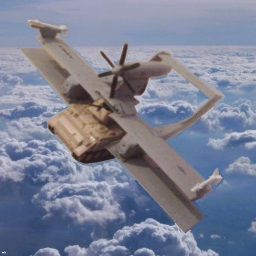Hot take: WWII rifles aren’t inherently priceless historic artifacts and I don’t really care that much when they’re “bubba’d.”
They made millions upon millions of Garands, Enfield’s, Mosins, etc. The amount of war materiel in general produced was astronomical. If we treated every weapon, truck, tank, shell, ship, and piece of shrapnel as priceless, we wouldn’t have known what to do with it all. It’d be like a hoarding mentality on a societal scale.
So yeah, people cut down old war rifles into hunting rifles. Repurposed surplus trucks where they could. Scrapped countless more where they couldn’t. People moved on.
FYI the Sage chassis pictured is completely reversible and does not require altering the base rifle.
I disagree? They made millions of gladii during the period those were the height of technology. We have almost no historic pieces because everyone just kinda left them to rust and recycling. Time takes its cut every year no matter what, and will take more should we let it.
We can make replicas if you wanna play gunsmif.
What would having more gladii actually do for us though? It would be cool if we had more specimens in better condition, but is there any information we could glean from more individual ancient weapons? Genuine question, I’m not a historian so I don’t even know what knowledge about this subject I lack
There can be no way to know what we could have learned: Do different regions have specific manufacturing techniques? Were regional techniques based on local or Roman techniques primarily? How did soldiers decorate their personal equipment? Would it have been grandious (as wealthy samurai) or were they kept small to display the unit as a uniform front? Did the changes to individuals’ equipment get adopted quickly (like a new phone does today) or did they stick with their grandfather’s sword as long as it was “good enough”?
We may have some ideas of all this and more, but more data points means more patterns to recognize. And people love pattern recognition.
deleted by creator
brrrt!
ping!
ka-chunk
“Ow, my thumb!”brrt!
ping! …When you want a new gun but want that satisfying PING!
Look how they massacred my boy.
Captain?
Can someone here more in the know explain this one for me? I see a clip, and I think that this is some kind of ludicrously hacked-up M1 Garand, but I thought that the Garand used a five-round clip, and those have four rounds.
I’m not even sure where to begin with your numbers. Here’s a picture of an M1 with standard clips.

Oh, okay, the Garand uses an eight round clip, and the rounds aren’t inline. I thought that they were inline, and that each clip in the image was two four-round clips sitting atop each other. Well, today I learned something. Thanks.
EDIT:
.30-06 ammunition for the M1903, 1903A3, and M1917 rifles and the Browning Automatic Rifle (BAR) was issued in five round stripper clips
That may be what I saw and confused it with, because those look pretty much exactly like the clip that I had thought went in the M1 Garand.
Confused the clip on the US issue rifle for WW1 and WW2.





